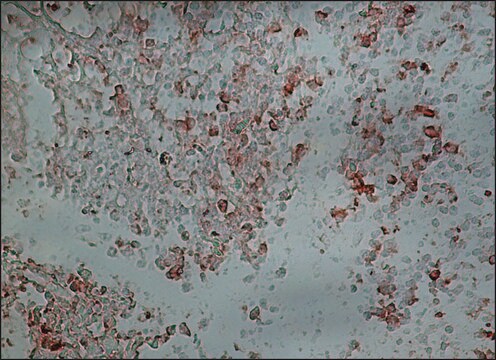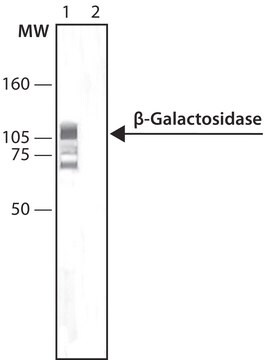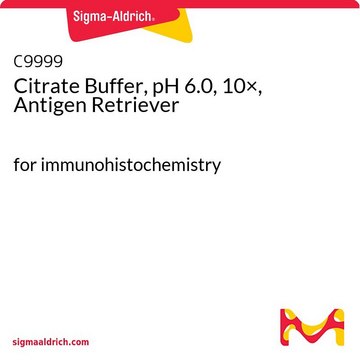AB1211
Anti-β Galactosidase Antibody
Chemicon®, from rabbit
About This Item
Polecane produkty
pochodzenie biologiczne
rabbit
Poziom jakości
forma przeciwciała
purified immunoglobulin
rodzaj przeciwciała
primary antibodies
klon
polyclonal
reaktywność gatunkowa
E. coli, vertebrates
producent / nazwa handlowa
Chemicon®
metody
ELISA: suitable
immunohistochemistry: suitable
immunoprecipitation (IP): suitable
western blot: suitable
numer dostępu NCBI
numer dostępu UniProt
docelowa modyfikacja potranslacyjna
unmodified
informacje o genach
human ... GLB1(2720)
Specyficzność
Immunogen
Zastosowanie
Immunoblotting: 1:2000-1:10,000 on beta-galactosidase fusion proteins.
Immunohistochemistry: 1:1,000-1:5000 on tissue fixed with 4% paraformaldehyde.
Immunoprecipitation
Optimal working dilutions must be determined by end user.
Epitope Tags & General Use
Epitope Tags
Postać fizyczna
Przechowywanie i stabilność
Komentarz do analizy
Proteins tagged with beta galactosidase
Inne uwagi
Informacje prawne
Oświadczenie o zrzeczeniu się odpowiedzialności
Nie możesz znaleźć właściwego produktu?
Wypróbuj nasz Narzędzie selektora produktów.
Kod klasy składowania
12 - Non Combustible Liquids
Klasa zagrożenia wodnego (WGK)
WGK 2
Certyfikaty analizy (CoA)
Poszukaj Certyfikaty analizy (CoA), wpisując numer partii/serii produktów. Numery serii i partii można znaleźć na etykiecie produktu po słowach „seria” lub „partia”.
Masz już ten produkt?
Dokumenty związane z niedawno zakupionymi produktami zostały zamieszczone w Bibliotece dokumentów.
Nasz zespół naukowców ma doświadczenie we wszystkich obszarach badań, w tym w naukach przyrodniczych, materiałoznawstwie, syntezie chemicznej, chromatografii, analityce i wielu innych dziedzinach.
Skontaktuj się z zespołem ds. pomocy technicznej








